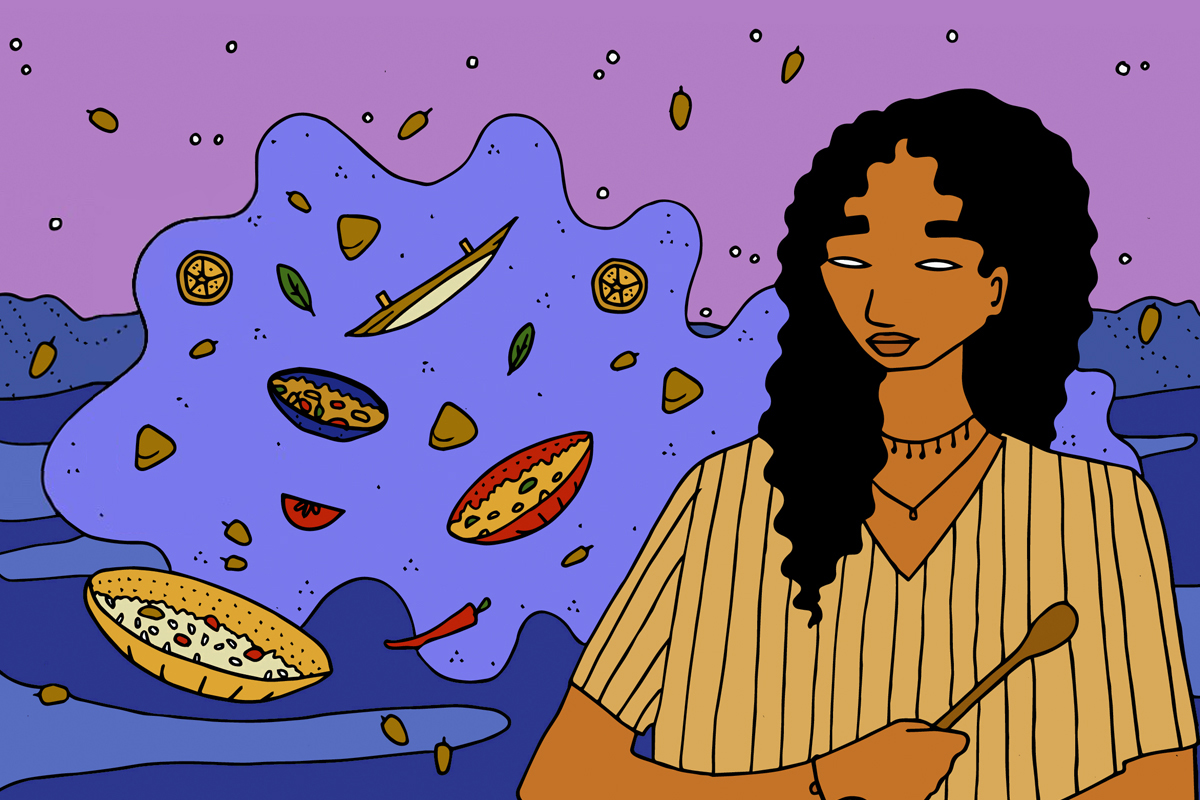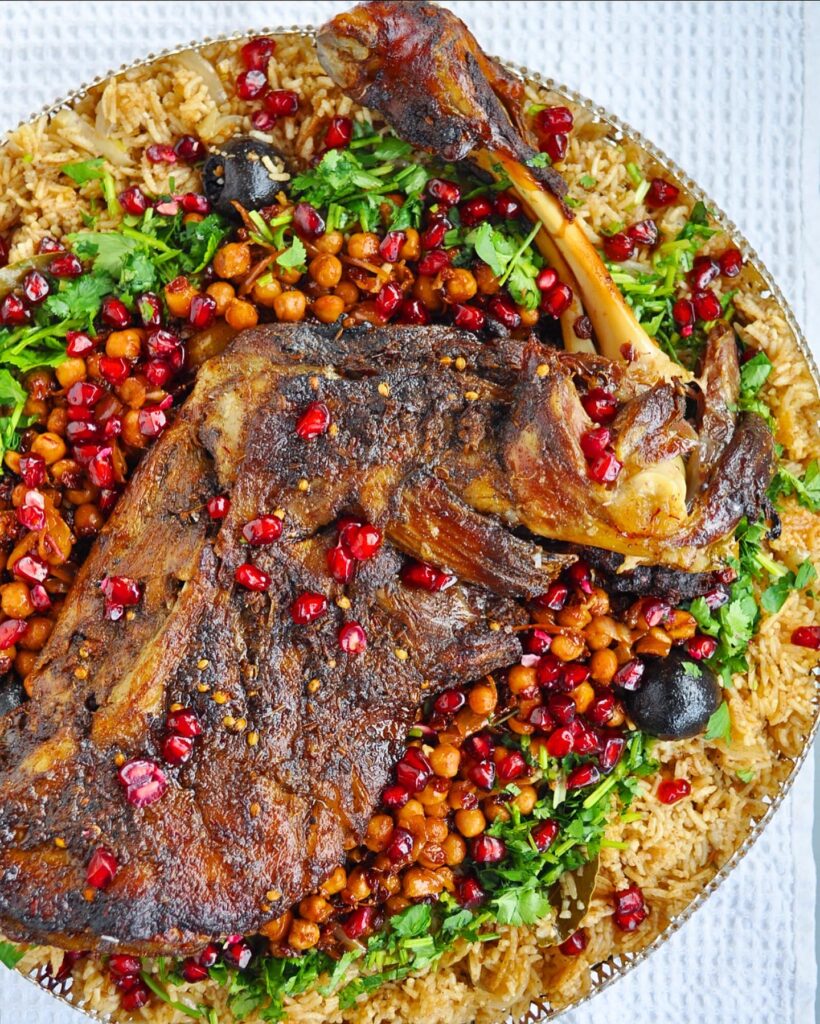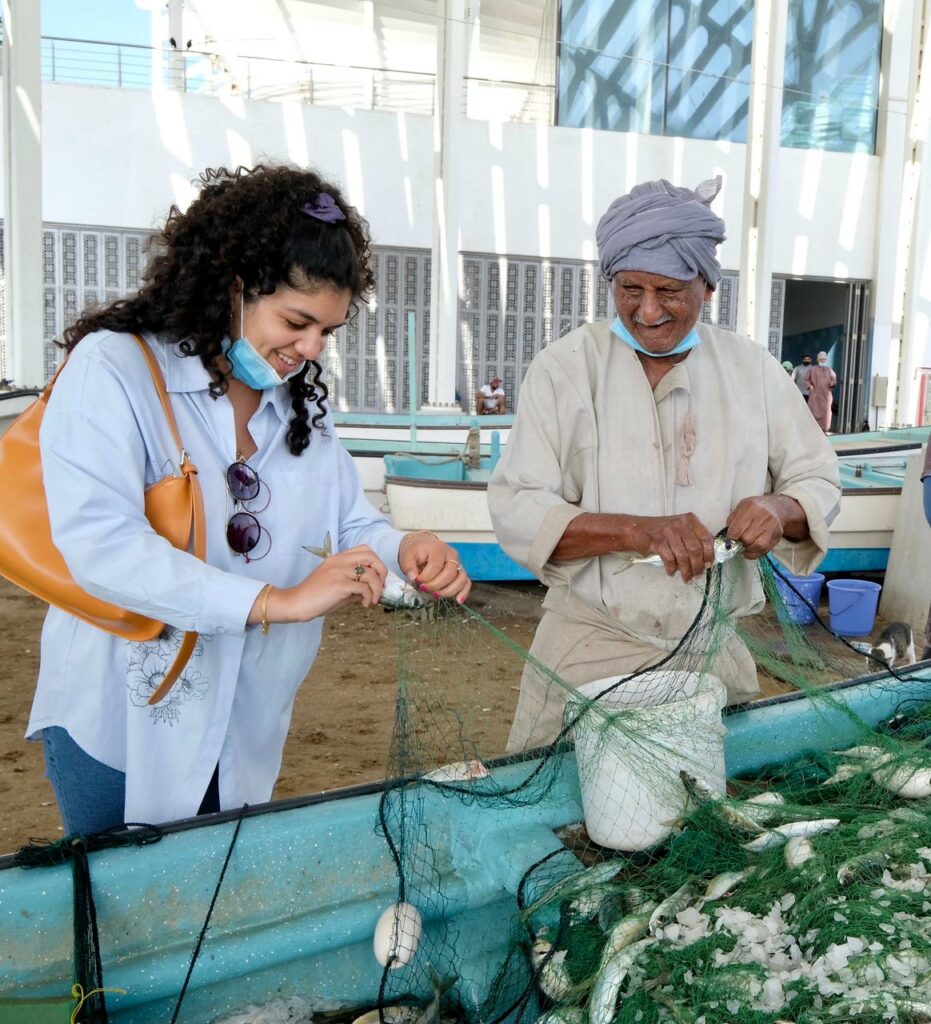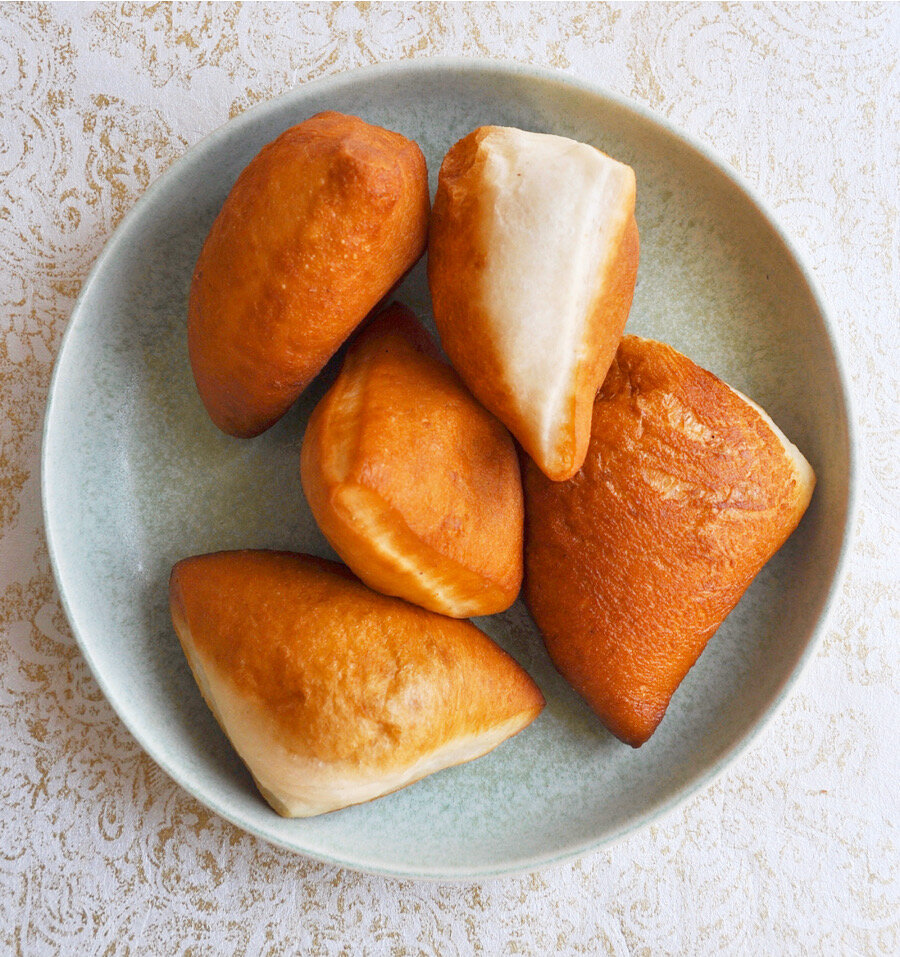Omani food is a reflection of our rich, layered history
Nestled on the south-east peninsula of Arabia, Oman and its colourful, eclectic cuisine tells the story of the country's past and people.
Dina Macki
09 Sep 2021

Illustration by Aude Nasr / photography courtesy of Dina Macki
Even before I begin to teach people about Omani cuisine, I usually need to spend a fair few minutes explaining where we are on the map. We are on the south-east peninsula of Arabia, so right at the bottom with Yemen bordering the south, Saudi Arabia next to us on the left and UAE above us. Basically, I tell people we are next to Dubai.
Through Omani food, I’ve found my voice and over the last couple of years I’ve delved into what makes our cooking so diverse; from travelling around Oman, learning techniques from villagers and most of all, cooking with my grandmother and listening to her stories. I’ve been documenting, writing and sharing recipes all through my Instagram page @dinewithdina, opening the door for more people to discover Omani food and history.
The context of Oman and its maritime history directly influences our food. It is the oldest Arab state in the world and showed signs of inhabitants since 10,000 years ago. Due to its strategic geographical position, it has always been a country that many competing groups wanted for themselves. Having a sea and land that connects you to Africa, Asia, Europe and Australia gives us one of the most important trade routes in the world.
Oman, being both ruled and ruler, has now brought us a number of tribes who all have a distinctive family lineage but still identify as Omani, making this the home to communities from places like Zanzibar, Pakistan and Baluchistan to name a few.
Zanzibar played a key part in Oman’s history when the island off the coast of East Africa was ruled during 1698 to 1964, which led to its capital, Stone Town, also becoming the capital of Oman for a period of time.
“To me, Omani food will always be bold and engrossed in flavours from South Asia, East Africa, south-east Arabia and western Europe”
Why is this unsavoury part of history so relevant to our food? Oman’s colonisation in Zanzibar was not only motivated by the wealth of the spices trade, but also by the wealth that slavery brought. Zanzibar in Arabic and Persian is pronounced Zanji (black) – bar (coast, sea), which translates from medieval Persian to “the land of the black people.” While the Omanis sold enslaved people to Arab countries, they kept most of them on plantations for cultivating cloves and coconuts, both of which were growing in demand. The trading brought many merchants to the island, encouraging the trade of both enslaved people and crops. This period introduced the rise of Zanzibar’s position as a hub for cultural exchange and cuisines in the turn of the century, becoming known as the ‘Spice Island’.
I was brought up with my mother’s family who predominantly cook the Zanzibari side of Omani cuisine – they were all born in Zanzibar and moved to the UK during the revolution in 1964. This side of my family is a mix of Omani, Zanzibari and Iranian, so many of our meals consisted of intertwined versions of all those cultures. Just imagine slow-roasted spiced lamb with jewelled herby rice and lots of coconut-boiled beans and vegetables, followed by deep-fried, perfectly golden samosas, biryanis and then more coconut-based desserts with a lot of syrup doused on everything!
It was a beautiful, unusual mix of food I didn’t really see amongst my friends growing up in Southsea, a little seaside town in Portsmouth – although this was home to a Zanzibari Omani community, we were still living in a predominantly white area. I was one of five foreign children in my school year, none of whom were Arabs, so for 16 years of my life, I grew up trying to be English, having no interaction with other cultures until moving to college outside of my town.
Food became my stepping stone to understanding my identity – having a tiny Omani Zanzibari diaspora in the UK meant it was hard to relate to others, especially to all my English friends I grew up with. Learning how to cook our food became the connection I was missing and helped me appreciate who I was.
While our dishes were never all that pretty to look at, they were the most soulful meals you could have. As I began to spend summers in Muscat with my extended family, I would spot the dishes my grandmother always made, as well as other Omani recipes such as; balouchi curries, Pakistani haleem, Indian kachori, paper-thin Omani bread, Yemeni BBQ and so much more. Through my exploration in the kitchen, it was crucial for me to master the dishes of my heritage and be able to continue that legacy.
“Just imagine slow-roasted spiced lamb with jewelled herby rice and lots of coconut-boiled beans and vegetables, followed by deep-fried, perfectly golden samosas”
Once I grasped our ingredients, methods and recipes, I wanted to share them with the world. The flavours and ingredients I love most are cardamom, coconut, dates, nutmeg, honey, figs, coriander and mango. But pomegranates are my signature – they are the crown jewel of my cooking, and from the flavour to the colour, I must have them in almost every dish.
I will always feel most comfortable and happiest in the kitchen, especially when I’m cooking Omani recipes. While I do an excellent job cooking other cuisines, the most I’ll stray away is so I can develop new hybrids, like dumplings filled with Omani curry or a honey pistachio pesto pasta.
Defining Omani cuisine in a couple of sentences would not do it justice. The beauty of our gastronomy is how we have cultivated the warm Indian spices like cassia cinnamon, cumin and turmeric brought over from the Portuguese, along with their hearty and vibrant Mediterranean diet. We’ve developed a love for incorporating opulent fragrances and fruit, like pomegranates, rose petals and saffron from Iran widely used within our savoury rice dishes and stews. The Zanzibar love for coconut and chilli has most definitely made its mark throughout the country, particularly within the capital. I don’t think there is one Omani you’ll find who doesn’t love a moreish mandazi (a sweet cardamom and coconut deep-fried beignet).
“The beauty of sitting down to an Omani table is understanding that your plate will be filled with an extensive history that has brought us together”
Yemen also has strong similarities to Omani cuisine shown through how we grill and stew, especially with camel meat. Recipes from Baluchistan and Pakistan have intertwined with the history of the tribes, who are always debating whose recipe is whose. Their fish and lamb curries, part of overall Omani cuisine, are very soupy in their consistency. The fish version is called paplo (pronounced ‘bab-lo’, as we don’t have a p sound in Arabic) and requires little ingredients but achieves its taste through the fish stock (being a coastal country, we have drool-worthy seafood such as; tuna, kingfish, lobster and mahi mahi). It’s brightened in colour with turmeric and it can’t be 100% authentic unless it packs a punch with lemon. This is one fruit in particular that is native to the country and known around the world as Omani Loomi, so always expect that zest in our dishes.
Combined with Oman’s Bedouin and mountain culture, the art of preserving meats and fish by drying or curing them is still practised widely in villages. Through these traditional practices, we have developed cured shark onion salads, beef jerky turmeric and milk stews, tuna tamarind curries, za’atar, cinnamon and dried lime soup and slow-cooked date squid.
To me, Omani food will always be bold and engrossed in flavours from South Asia, East Africa, south-east Arabia and western Europe. One of my favourite and most comforting meals is qabooli, a nine-spiced rice and meat dish served with pomegranate saffron chickpeas, caramelised onions and golden raisins. The beauty of this dish is the synergy of flavours from boiling the meat and spices together, creating an aromatic stock for the rice to cook in. The name of the dish actually pays homage to Afghanistan. Legend has it that the Afghani pulao recipe was brought over by merchants from Kabul and Omanis loved the taste of it. But as we were used to more spices, and most importantly, lemon, we created our own version and named it qabooli.
As our tribes have intermarried, the traditions of food and cooking practices have followed and amalgamated with them. The beauty of sitting down to an Omani table is understanding that your plate will be filled with an extensive history that has brought us together. I have always found that food is a conversation starter, a reason to bond, love and most of all share – Omani food is exactly that. By us uniting, we have been able to share a past, while holding onto our inimitable identities through what we eat.









